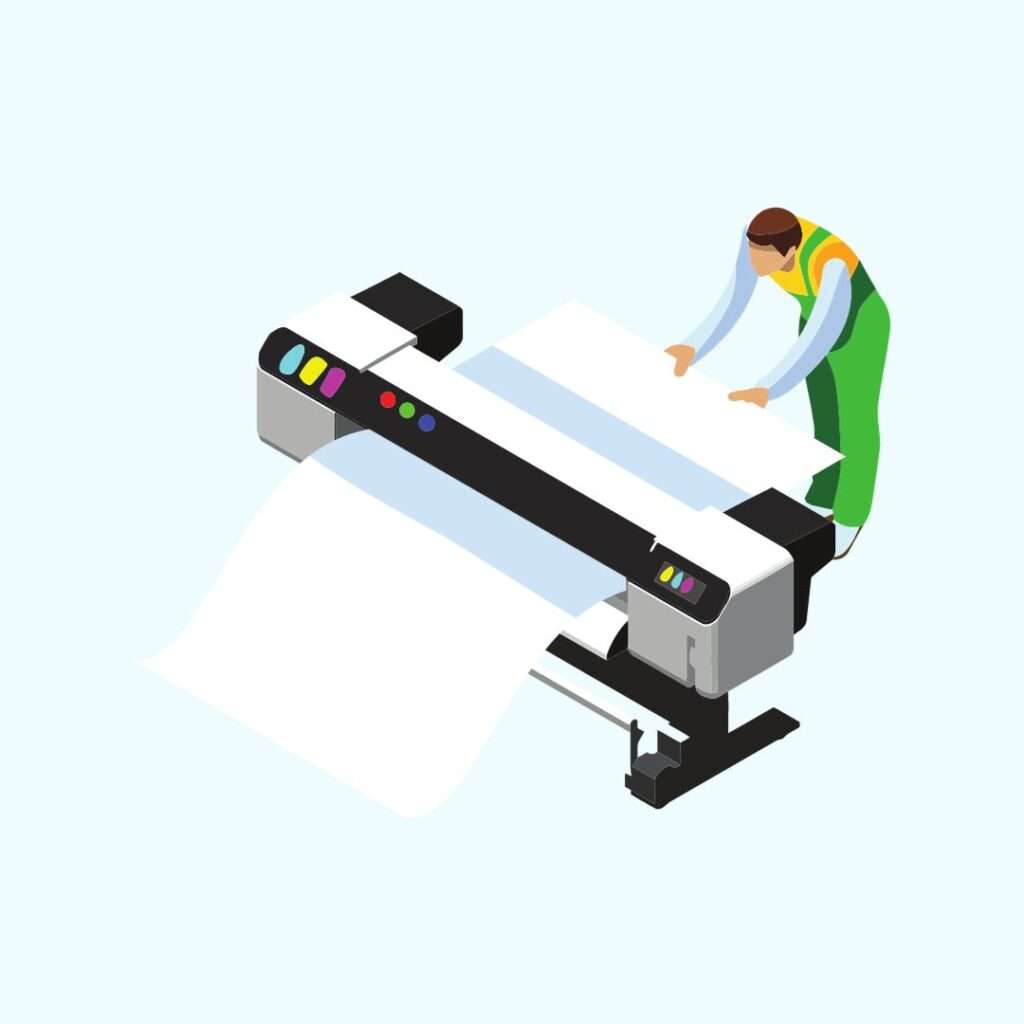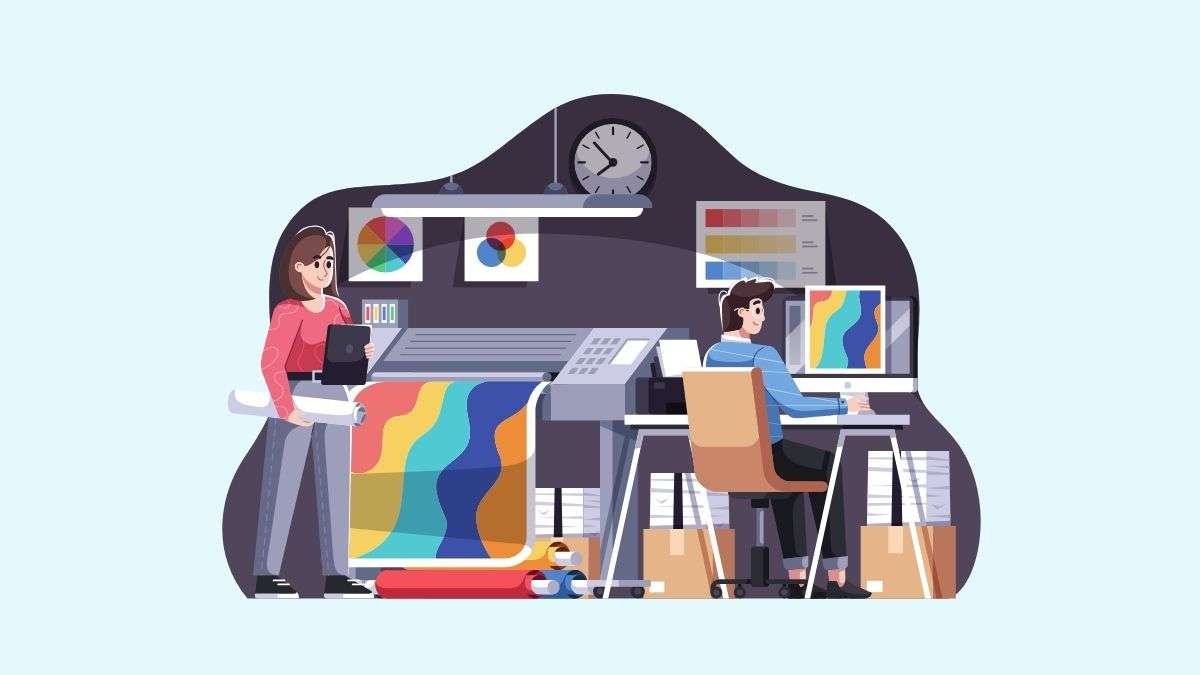Table of Contents
- Introduction
- The Printing Revolution: What Changed in Publishing
- Understanding How Printing Technologies Changed Publishing
- Exploring the Printing Technologies
- The Industrial Revolution
- Conclusion: Embracing the Future of Publishing
Introduction
The article explores how printing technologies changed publishing. Before the invention of printing technologies, books and other written works had to be painstakingly copied out by hand. This manuscript production was an extremely labor-intensive process that limited the availability and affordability of books. Only institutions like churches, universities, or wealthy individuals could afford to produce manuscripts in any significant number.
Brief History of Manuscript Production
Manuscripts were made from materials like vellum (made from animal skin) and had to be written letter by letter by scribes. Decorated illustrations and capital letters were often added by hand in a very meticulous process. Producing a single book could take months or even years of skilled labor.
This made books extraordinarily expensive and rare items inaccessible to the general public. High rates of illiteracy also limited the readership of books. The limited availability and distribution of manuscripts severely restricted the spread of knowledge and new ideas before the invention of printing.
Emergence of Printing Technologies
That all changed dramatically with the emergence of revolutionary new printing technologies in the mid-15th century. The invention of moveable type, improvements in ink production, and the introduction of the printing press allowed for the automated mechanical reproduction of texts.
Instead of writing out each page and copying each other individually, texts could now be typeset once and mass-produced in exact copies. This allowed books to be made faster, cheaper, and with greater accuracy – increasing the supply and circulation of books exponentially.
Printing technologies democratized knowledge and sparked a rapid growth in literacy rates. Over time, books’ greatly expanded availability and affordability also fueled massive cultural shifts across Europe and beyond.
The Printing Revolution: What Changed in Publishing
The shift from labor-intensive manuscript production to efficient mass printing marked a significant turning point in publishing, allowing us to witness how printing technologies changed publishing.
Before the printing press, books were painstakingly handwritten and illustrated by scribes and artists, limiting both the output volume and the affordability of books. The advent of the printing press revolutionized book publishing by enabling:
The printing press allowed the mass production of written works through mechanical movable typesetting and printing. This replaced the old process of manual copying by scribes, accelerating printing speeds tremendously. Some key innovations that enabled this included:
- Movable metal type that could be arranged and rearranged to print different material
- The printing press itself – a machine applying even pressure to transfer ink from type to paper
- New oil-based inks that adhered better to metal-type
Printers could use these technologies to produce hundreds or thousands of copies of a work in a fraction of the time it took scribes to copy manuscripts by hand laboriously. This drove down the unit costs of book production significantly.
The increased printing efficiency led to books becoming more widely available and affordable around Europe. Some critical impacts included:
- Lower prices – printed books cost a fraction of handwritten editions, expanding the reading public
- Wider circulation – books could spread beyond monasteries and wealthy estates to universities and middle-class homes
- Standardization of texts – errors were reduced compared to hand-copying
- Growth of literacy – more people learned to read to take advantage of the increasing variety of books
In these ways, printing opened up knowledge and ideas to the emerging middle class and hastened the spread of literacy. More books also led to the faster diffusion of new ideas and discoveries in science, politics, arts, and religion across Europe.
Understanding How Printing Technologies Changed Publishing
The advent of printing technologies in the 15th century had a revolutionary impact on disseminating ideas and knowledge. For the first time in history, books and other printed materials could be produced on a massive scale for mass consumption. This allowed information and new ideas to spread rapidly to a much wider audience.
Whereas the painstaking process of hand-copying manuscripts previously limited book production, the new printing press technology-enabled printers to produce hundreds or thousands of copies of work quickly. This allowed ideas contained within books to be distributed on an unprecedented scale. Knowledge was no longer confined to a small circle of elites with access to rare manuscripts – it could now reach scholars, academics, clergy, merchants, and eventually ordinary citizens across Europe and beyond.
The surge in the availability of printed books also had profound implications for education and literacy rates. More schools were established during this time to teach reading specifically so that more people could benefit from reading widely available printed materials. As literacy rose, so did general education levels and public discourse on humanism, science, political thought, and religious debate.
This widening circulation of information contributed directly to spreading Renaissance ideals and learning across Europe, setting the stage for cultural development and enlightenment. The printing revolution played a vital role in the eventual shift away from the medieval worldview by allowing pioneering ideas and theories to be disseminated widely to scholars and the public.
Exploring the Printing Technologies
The development of printing technologies in the 15th century marked a significant turning point in the history of publishing. Innovations in movable type printing and mechanical printing presses enabled books and other materials to be produced at a scale never before seen.
The movable type was a revolutionary innovation developed in China in the 11th century and later perfected by Johannes Gutenberg in Europe in the 15th century. Each letter or character was carved individually from wood or metal and could be arranged and rearranged to form words and sentences. This allowed printer operators to quickly compose a page, ink the type, and press an image of it onto paper.
The printing press mechanized this process using a screw-type press to apply direct pressure, allowing printer operators to produce multiple prints quickly. Gutenberg combined movable type, oil-based inks, wooden hand molds, and screw-type printing press to design a practical mass production system.
Advances in paper-making were also critical, as an increased supply of paper was necessary to feed the fast production of printing presses. Paper mills began relying on water wheels and other sources of kinetic energy rather than manual labor. The availability of rag paper increased through trade networks across Europe.
Developing oil-based inks that adhered to metal type was another critical innovation that facilitated printing. Unlike water-based inks used for woodblock printing or writing, these thick and tacky inks did not smudge or bleed through paper.
The innovations in movable type, the printing press, paper production, and ink dramatically changed publishing by enabling the mass production of written works at scale.
The Industrial Revolution
Another critical era in which we can appreciate how printing technologies changed publishing is the Industrial Revolution.
During the Industrial Revolution, from the late 18th century to the early 19th century, printing technologies underwent significant advancements that further transformed the publishing industry. The Industrial Revolution was characterized by the transition to new manufacturing processes in Europe and the United States, and these changes were also reflected in the printing field.

One of the most notable developments was the mechanization of printing presses. Since Gutenberg’s time, the manual presses were replaced with steam-powered printing presses. These new machines could print thousands of sheets per hour, compared to the few hundred produced with a manual press. This increased productivity made printing faster and less expensive, contributing to a surge in the production and distribution of printed materials.
The Industrial Revolution also saw the introduction of the iron press, which was more substantial and durable than previously used wooden presses. This allowed greater pressure to be applied during printing, resulting in clearer and more consistent impressions. Iron presses facilitated longer print runs without the degradation in quality that was common with wooden presses.
Another important innovation was the development of the rotary press by Richard Hoe in 1843. Unlike the flatbed press, where the type had to be pressed onto paper in a single stamping motion, the rotary press used a cylinder to roll over paper continuously, greatly increasing printing speed. The rotary press was particularly well-suited for high-volume publications such as newspapers, leading to an explosion in newspaper circulation.
Typesetting also evolved during this period. The painstaking process of setting type by hand was improved with the invention of typesetting machines like the Linotype machine (invented by Ottmar Mergenthaler in 1886) and the Monotype machine (developed by Tolbert Lanston in the late 19th century). These machines automated the process of composing text for printing, which sped up the process and reduced the likelihood of human error.
The improvements in paper production should not be overlooked. The introduction of wood pulp paper in the 19th century provided a cheaper and more abundant alternative to rag paper, which was limited by the availability of rags. This change made the paper more accessible and affordable, making books and newspapers cheaper to produce.
Lastly, advances in transportation and communication during the Industrial Revolution aided the distribution of printed materials. Railroads and steamships enabled publishers to distribute their products over greater distances at lower costs and with greater speed than ever before.
In summary, the Industrial Revolution brought about major changes in printing technologies that increased publishing speed, efficiency, and affordability. These technological advancements democratized access to information and literature even further, creating a more informed and literate public and laying the groundwork for the mass media culture of the 20th century.
Conclusion: Embracing the Future of Publishing
We have explored how printing technologies changed publishing. Printing technologies have had an enduring influence on publishing and the dissemination of information. The shift from laborious manuscript production to efficient mechanical printing enabled the spread of books and ideas. This drove massive growth in literacy, education, and access to knowledge that still shapes our world today.
Yet, as monumental as that printing history and revolution were, we now stand at the cusp of an equally significant transformation in publishing. Digital technologies and the internet have made content more accessible than Johannes Gutenberg imagined. Information can now be created and shared globally at the click of a button.
We must embrace this future while also honoring the legacy of print. The printing press opened the doors of knowledge for countless generations. Though information may increasingly live online, the books that printing made possible will always retain their wonder as artifacts of human creativity.
Printing technologies have had an enduring influence on publishing and the dissemination of information. The shift from laborious manuscript production to efficient mechanical printing enabled the spread of books and ideas. This drove massive growth in literacy, education, and access to knowledge that still shapes our world today.
